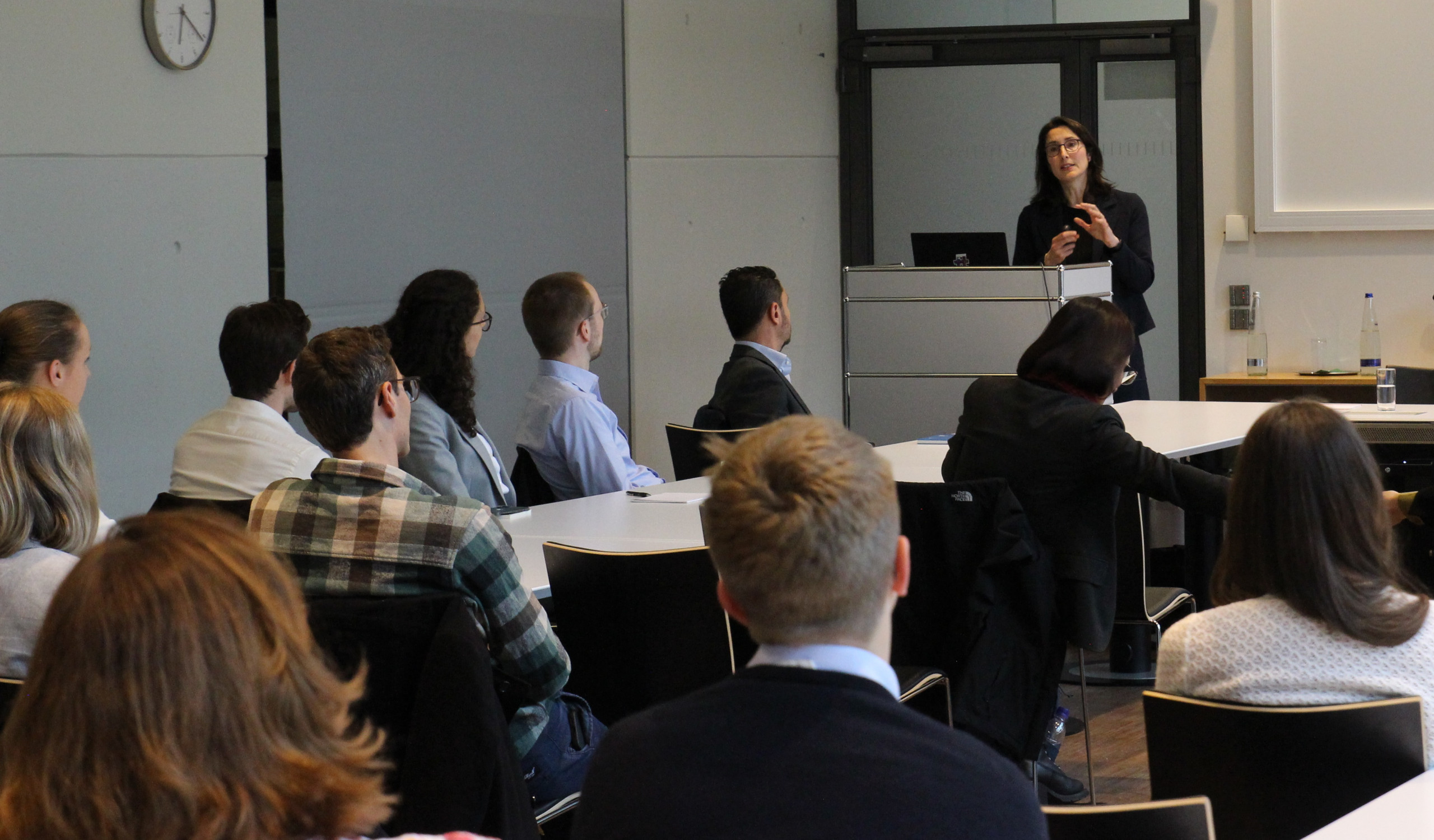Fiscal Integration in the EU: The consequences of 'legal acrobatics'

In the recent past, several crises have accelerated the European Union's (EU) pursuit of fiscal integration, notably the Euro area crisis and the COVID-19 pandemic. In light of the practical impossibility of amending the EU Treaties, this has happened by way of 'legal acrobatics', stretching the boundaries of the EU Treaties, as Prof. Alicia Hinarejos pointed out in her lecture 'The Fiscal Integration in the EU: Acceleration, Constitutional Pitfalls, and Limits', which took place in the framework of the Max Planck Hub Fiscal and Social State on 8th May 2024. Alicia Hinarejos, an expert in EU law and comparative public law, holds a professorship at McGill University in Montreal, Canada.
Since its creation, the Economic and Monetary Union (EMU) has been characterised by an asymmetric set of policies – and thus by a certain imbalance: a centralised monetary policy on the one hand, and a decentralised fiscal policy on the other. Most importantly, the EMU was not supposed to be a transfer union. Consequently, the emphasis was on risk-limitation rather than risk-sharing. However, during the Euro area crisis it became clear that the EMU needs improvements to address and prevent macro-economic shocks through risk-sharing. Yet, the challenges posed by the Euro area crisis for a number of Member States were not addressed by a Treaty reform but 'by changes to the interpretation of central EMU provisions and the adoption of non-orthodox political measures', Hinarejos said, in particular the creation of the European Stability Mechanism (ESM). The conflict between a rule-based and a discretion-based approach to fiscal integration, however, was not solved.
After some years of standstill, the COVID-19 crisis renewed the discussion on the creation of a permanent fiscal capacity of the EU or the Euro area. With 'Next Generation EU' (NGEU) the Union set up a 'historical recovery plan' in 2020, comprising more than 750 billion Euro. The grants and loans, which were bound to some conditionality, were funded through the issuance of common debts – and thus through risk-sharing. Furthermore, the Member States agreed on a roadmap to introduce new ways for the EU to raise its own resources. The legal basis for these measures was TFEU Art. 122 on financial assistance in emergencies and Art. 175 (3) on cohesion. Hinarejos underlined that, again, a solution to handling the crisis was found through legal acrobatics.
These "acrobatics" give raise to several concerns, which Prof. Hinarejos identified at the end of her lecture: First, the NGEU could be used as the model for a new workaround in future emergencies, whereby it is unclear how it is being funded and who makes specific political decisions about spending. Secondly, important reforms are carried out by stealth, with the Executive dominating and the role of the European Parliament being limited. Lastly, in so doing, the conflict is pushed onto the judicial arena, which discredits the EU institutions. There was only one solution if the EU wanted to stop with 'muddling through': The Member States had to settle the conflicting issues.



